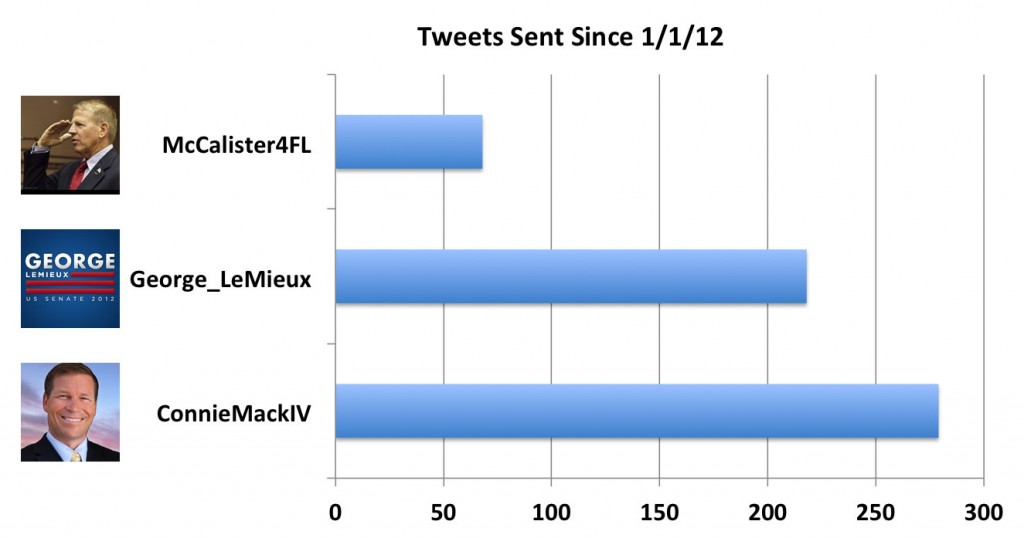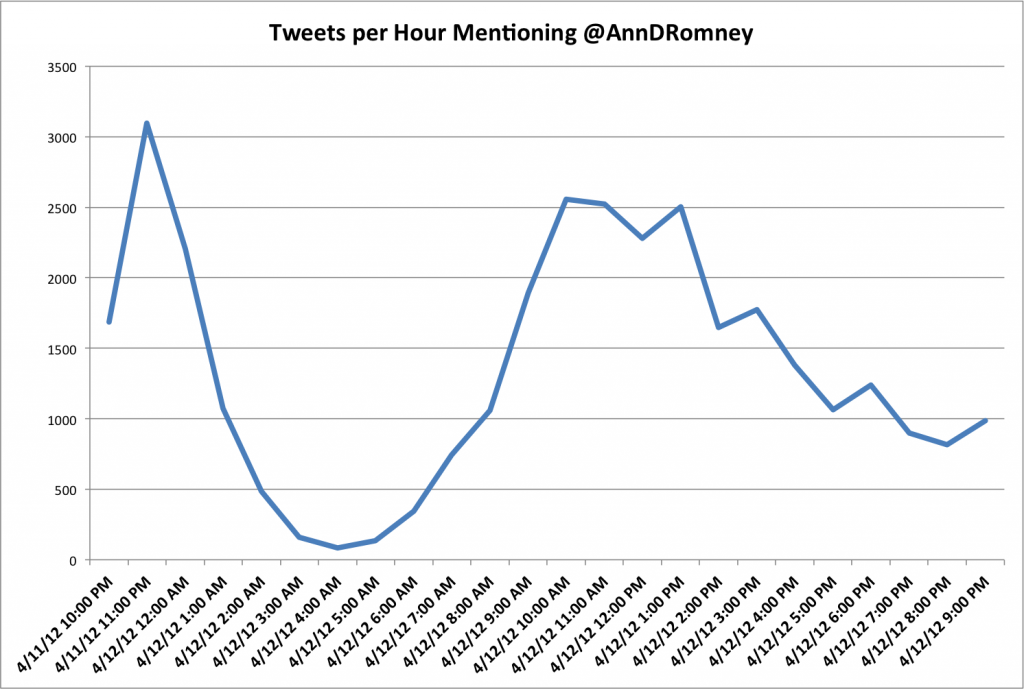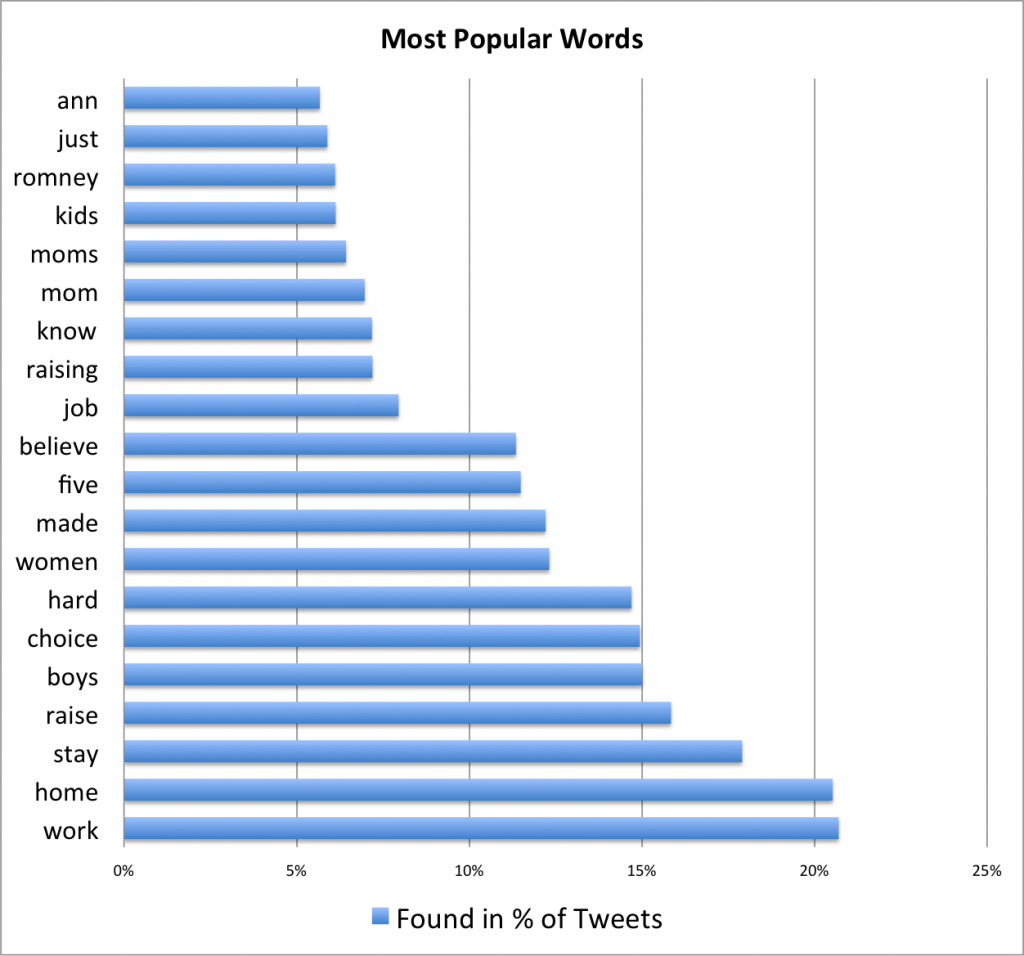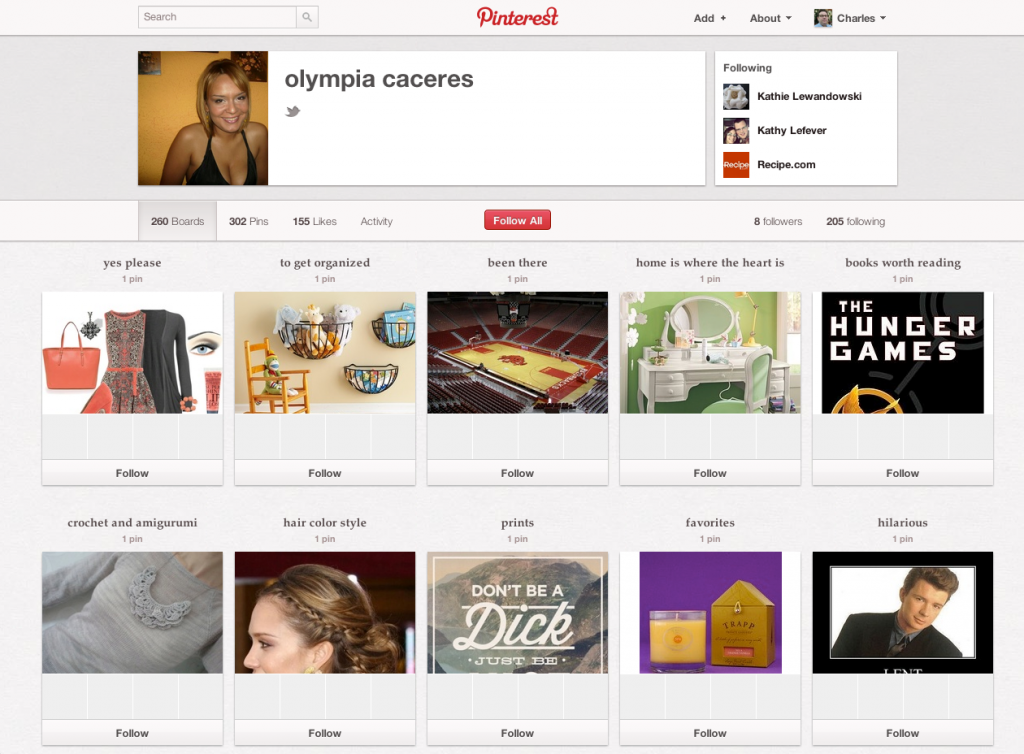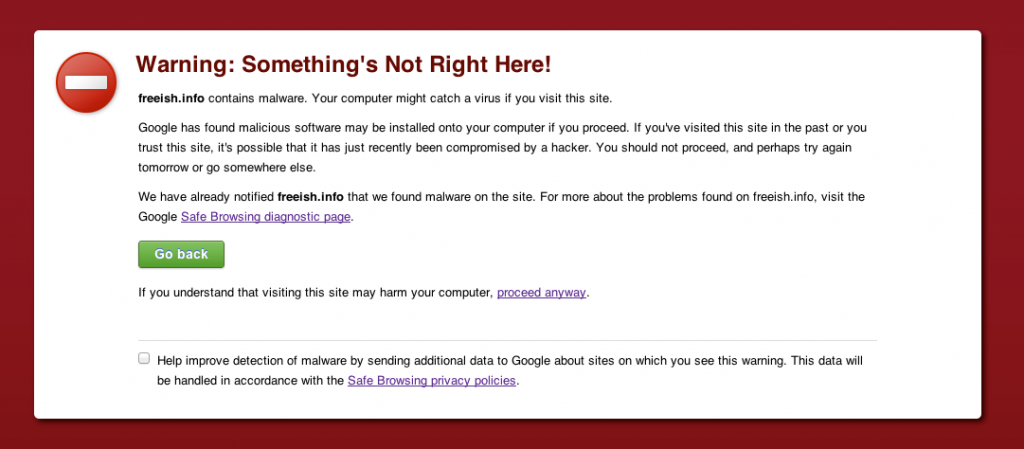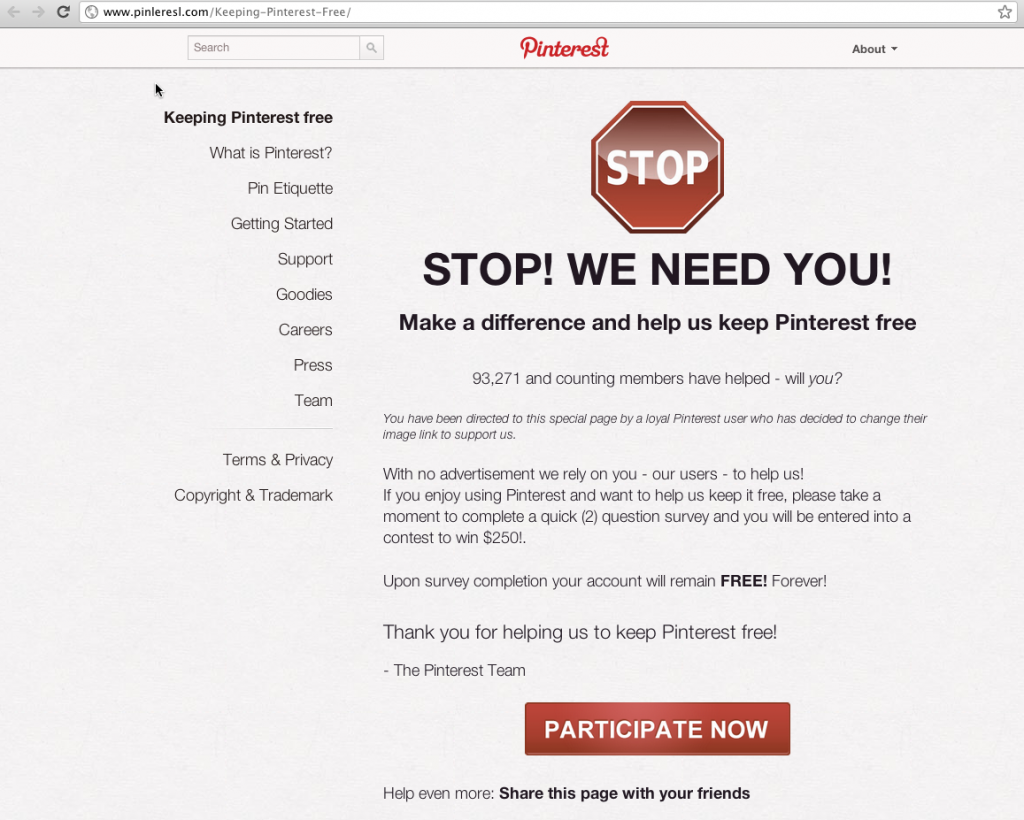At a closed door fundraising meeting Sunday (4/14), Mitt Romney is reported to have said:
“We are behind when it comes to commentators on TV. They tend to be liberal. Where we are ahead or even is on twitter and on the Internet.”
Is he? That’s an interesting question for several reasons. First, there’s no single definition of ahead or behind. Second, because any real metric is a bit hard to calculate. Third, Twitter is a fairly volatile place, and so picking the timeframe might influence things one way or another.
Let’s work through these issues and look at what the statistics show us. Maybe we’ll come to an answer — or maybe we’ll decide it’s too hard to answer a simple question!
First: What is the right definition of ahead?
One definition of “ahead” is a sort of gestalt kind of thing: it does seems like Mitt just had a good twitter week. That’s not an unreasonable way of looking at things, but it’s also not really something you can prove. I’m sure Mitt is happy about the recent conflict between Ann Romney and Hilary Rosen. Mrs. Romney got a lot of press and a lot of tweets that may have turned the tide for a while in the war on women debate. However, taking advantage of your opponent’s gaffs is not really a strategy (unless your opponent is predictably gaff-prone). A few weeks from now, this will have faded away and be replaced by some other outrage. We might assume a pro-Romney shift in Twitter, but it could fade.
Another definition of “ahead” might be # of followers. I’ve seen this mentioned a few times by others. The problem is it doesn’t really delve into why people are following you. They may love you and hang on every word. They may hate you and are looking for you to slip up so they can pounce on it. I think the combativeness of political discourse means that # of followers is a very tough metric to draw conclusions from; you’re just not going to know a lot about why people are following you. If Mitt was Tide Soap, followers would probably be a great metric.
You might say you’re ahead based upon the number of tweets you make. This might be a great metric of how active your social media team is, but is probably not a great metric of how effective you are. It’s an input to the process, not an output. Again, this is at best a tie breaker.
One definition of “ahead” I think is meaningful is how often you get mentioned in tweets. It’s not perfect, because if you say or do something that animates your opposition, you’re going to trigger a bunch of tweets even though they are not supporters. But, over time, the number of mentions is at least a valid indicator of mindshare.
Another useful definition of “ahead” is how often you get retweeted. Unfortunately, this is not a great standalone metric — if you are not a heavy tweeter or your tweets are not particularly retweetable, you won’t score well even if you are the darling of the media.
A combination of the last two is useful, though, to see how much of the twitter conversation you dominate. And it’s what we can go on — it’s hard to draw any other metrics out of Twitter.
So let’s start the scoring!
We’re looking at the accounts @MittRomney, which is the official campaign account for Mitt Romney, and @BarackObama, which is the official campaign account for Barack Obama. We’re also looking at tweets taged with #Mitt2012 or #Obama2012
Followers:
- Mitt Romney: 442,029
- Barack Obama: 14,275,493
I did say that followers are not a great metric, but you’d have to admit that Obama is way ahead here. You might give Obama an advantage since he joined Twitter in March 2007 and Mitt Romney joined June 2009. But that’s not much of a difference, although I suspect that Romney only really got active once he announced his campaign which didn’t help. Still, if you were going by followers, Romney is way behind.
How about by the # of tweets since the start of the year?
- Mitt Romney: 180
- Barack Obama: 1063
Barack Obama sends out about 6 times as many tweets as Mitt Romney does. While I did say that the # of tweets is not an indicator, in itself, of your presence on Twitter, the comparatively fewer tweets from Romney probably trickles down into the statistics which follow:
In terms of mentions — the number of tweets by people that include either @barackobama or #obama2012 for Obama or @mittromney or @mitt2012 for Romney:
- Mitt Romney: 60,502
- Barack Obama: 138,881
The President is ahead by a bit over 2 to 1 here. That’s actually an impressive showing by Romney, given his light tweeting. But it is still a 2+ to 1 advantages to the President.
In terms of retweets, where somebody has been so moved by what the candidate says that they repeat it to their followers:
- Mitt Romney 10,006
- Barack Obama: 34,288
Here the President is 3+ to 1 over Romney.
Even Klout has the President with a higher score than Romney.
Net net (wow, you read this far?):
Romney is way behind on Twitter, his one good week with the Ann vs. Hilary battle notwithstanding. If he thinks that, he needs to have a metrics based discussion with his social media team. Any viable metric you come up with is going to show him at best 2 to 1 behind and probably far worse.
Notes:
For the count of # of tweets sent by the candidate, I looked at their tweets between 1/1/2012 and 4/14/2012, inclusive. For the other metrics, I looked at all tweets sent between 2012-04-10 01:00:29 and 2012-04-16 17:00:35 EDT, a few hours short of a full week’s worth.

